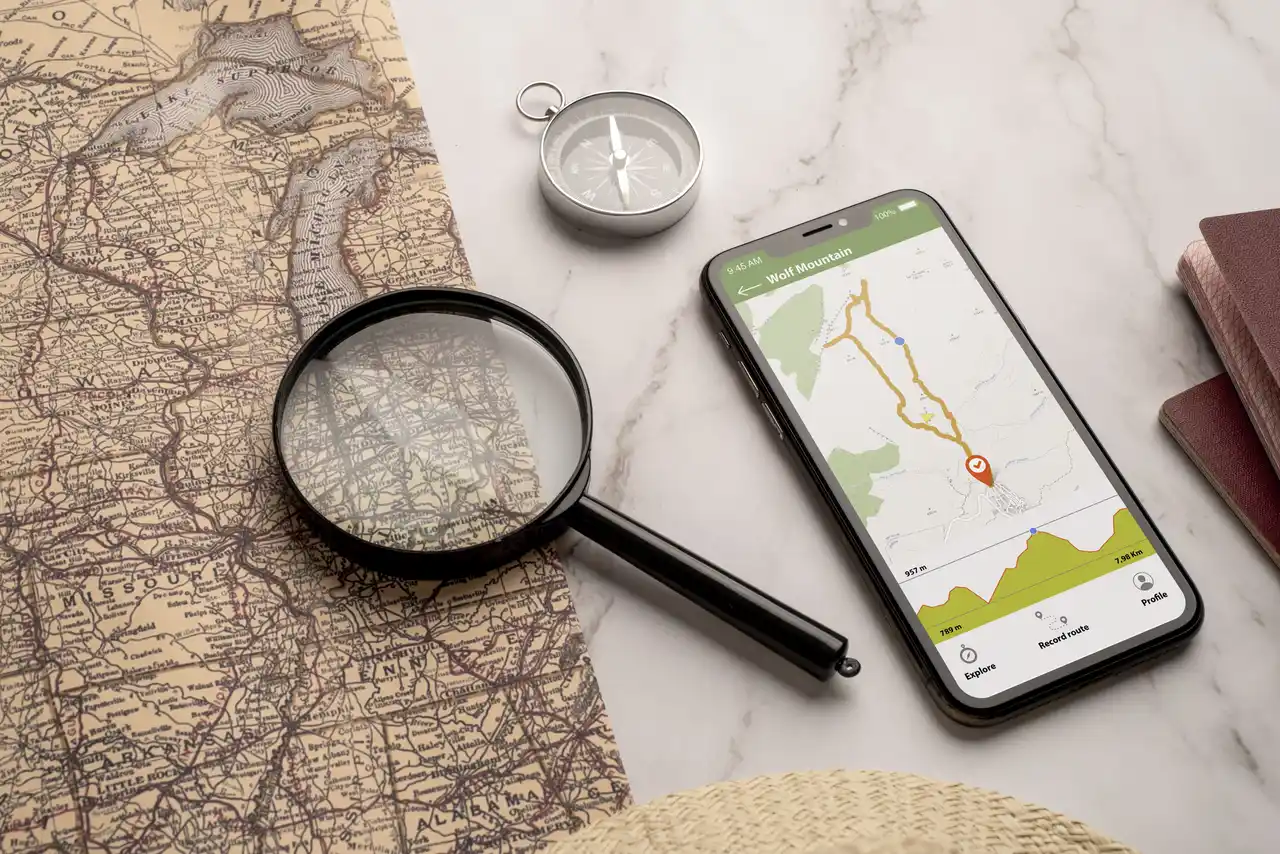Listen to article
Is Your Blog Optimized? Key Statistics to Boost Performance
In an era where information is abundant and attention is scarce, standing out in the digital landscape requires more than just great content. It demands a strategic approach to blog post design that not only captures attention but also drives engagement and conversions. For B2B marketers, this means understanding the nuances of what makes a blog post appealing, readable, and ultimately, clickable.
Are you maximizing the impact of your blog? The key lies in blog optimization. From leveraging the right content formats to ensuring your message is easily digestible, every element plays a crucial role in attracting and retaining your audience.
In this article, we’ll explore essential blog optimization statistics like the role of blogs in B2B content marketing, highlight the importance of trust and expertise, and delve into content formats that resonate with B2B buyers.
Why Blogs Are Essential for B2B Content Marketing Success
In an era where decision-making in B2B often involves prolonged sales cycles and multiple stakeholders, blogs have solidified their position as a cornerstone of content marketing strategies. Acting as both a knowledge hub and a trust-building tool, blogs empower brands to position themselves as thought leaders while driving organic traffic and nurturing leads. But their real power lies in how effectively they can be integrated with other marketing channels to create a seamless customer journey.
- A compelling 90% of content marketers include blogs in their marketing strategy, showcasing their widespread appeal and effectiveness. Source
- Blogs are the third most utilized channel for B2B content distribution, with 79% of B2B marketers leveraging blog posts to distribute content—trailing only email (93%) and social media (92%). Source
With nearly universal adoption among content marketers, blogs go beyond just driving traffic—they act as a keystone in connecting your audience to other digital touchpoints, such as email campaigns, social posts, or whitepapers. However, blogs that stand out are those that dive deeper into industry pain points, offer actionable insights, and take advantage of multimedia formats like embedded videos and infographics.
Pro Tip:
To elevate your blog’s performance, couple it with dynamic distribution strategies. For instance, republish excerpts on LinkedIn, create carousel posts on Instagram based on key points, or feature blog links in nurturing email sequences. This multi-channel approach ensures your content reaches decision-makers where they’re most active—while driving them back to your website for further engagement.
Building Credibility with Authoritative Content
In an era of information overload, standing out isn’t just about being heard—it’s about being trusted. B2B buyers are no longer swayed by flashy campaigns alone; they’re looking for content that demonstrates expertise, reliability, and genuine value. Establishing this kind of authority isn’t just optional—it’s the foundation of long-term success in today’s competitive landscape. Below are some key statistics that underscore why credibility and expertise are essential in your content strategy:
- 78% of B2B buyers are placing greater emphasis on the trustworthiness of the sources they consult. Source
- To stand out in 2025 and beyond, your content needs to establish you as an expert in your industry by publishing thought leadership content. Source
The takeaway here is clear: trust and expertise are your competitive edge. High-value B2B relationships are built on credibility, and producing consistent, data-driven, and insightful content is the fastest route to earning that trust. Whether it’s through thought leadership blogs, in-depth reports, or case studies, focus on content that solves real problems and positions your brand as an industry authority.
By integrating a comprehensive B2B website strategy into your approach, you can further amplify the impact of your authoritative content. Your website serves as the primary hub for showcasing this content, making it essential to optimize user experience, navigation, and design to build trust at every touchpoint.
Pro Tip:
Incorporate storytelling into your thought leadership pieces. Sharing personal experiences, case studies, or client success stories adds authenticity to your expertise while fostering a stronger emotional connection with your audience.
Winning Content Formats That Drive B2B Engagement
In the fast-paced world of B2B marketing, standing out often depends on delivering the right content at the right time. Decision-makers are not only looking for solutions; they demand resources that provide actionable insights, build trust, and guide them through complex purchasing decisions. By tailoring your content strategy to align with these needs, you can ensure your message resonates and inspires action.
Here’s a closer look at the content formats that consistently perform well in B2B marketing:
- Articles/blog posts, white papers, and videos are ranked as the top content types for effectively moving prospects through the sales funnel. Source
- Ebooks and white papers are leaders in effectiveness, with 50% of marketers naming them top performers, followed by case studies (47%) and social media posts (41%). Source
- The most-used content formats in B2B marketing include social media posts (94%), case studies (73%), pre-produced videos (72%), ebooks/white papers (71%), infographics (65%), and illustrations/photos (56%). Source
A balanced content strategy isn’t just a nice-to-have—it’s a necessity. Blog posts and videos are your top-of-funnel champions, sparking interest and driving awareness. For mid-to-late-stage buyers, white papers and case studies step in as decision-making tools, showcasing your expertise and customer success stories. Using a multi-format approach ensures you meet prospects where they are while effectively guiding them toward conversion.
Pro Tip:
When diversifying your content formats, don’t just focus on quantity—prioritize quality and alignment with your audience’s biggest pain points. Lean on audience data to identify their preferred formats and experiment with tools like interactive infographics or explainer videos to create a memorable experience at every stage of their journey.
Making Your Blog Content Skim-Friendly for Maximum Impact
Capturing attention in the digital age isn’t just about what you say—it’s about how you present it. With information overload becoming a daily reality for most users, delivering value quickly and visually has never been more critical. Skimming has become the dominant reading behavior online, meaning that formatting plays as much of a role in engaging your audience as the content itself. By catering to this behavior, you can help readers grasp your key points while keeping your content accessible and digestible.
- 73% of readers skim blog articles, leaving only 27% who consume content thoroughly. Source
- On Facebook, users spend an average of 1.7 seconds on any given piece of content. Source
- Remarkably, Facebook users can recall content after seeing it for as little as 0.25 seconds. Source
Tailoring your blog for skimmers isn’t just a design trend—it’s a critical strategy for sustaining audience engagement. Use bolded headings, bulleted lists, concise paragraphs, and compelling visuals to keep readers engaged without overwhelming them. Think of your content as a roadmap, guiding readers toward the key insights they’re looking for.
Pro Tip:
Leverage “above-the-fold” real estate to highlight the most impactful points or takeaways upfront. Pairing this with an engaging headline and strong subheadings ensures even the busiest reader can walk away with value in seconds. For businesses looking to amplify their online presence further, combining these design strategies with digital marketing strategies for small businesses can create a more comprehensive approach to increasing audience engagement and driving traffic.
Conclusion
In the ever-evolving world of B2B marketing, blogs continue to play a pivotal role in connecting businesses with their target audience. As highlighted, blog optimization isn’t just about creating content; it’s about crafting an experience that resonates with readers, builds trust, and drives actions. By leveraging blog posts for content distribution, emphasizing credibility through authoritative insights, and diversifying content formats, marketers can effectively engage their audience at every stage of the buyer’s journey.
The statistics speak for themselves: B2B marketers lean heavily on blogs and other content types like white papers and case studies to educate, inform, and convert. Yet, with 73% of readers skimming content, it’s clear that formatting for quick consumption is no longer optional—it’s essential. Incorporating skimmable elements like bullet points, compelling visuals, and structured layouts can make the difference between capturing attention and losing it to the endless scroll.
Ready to enhance your blog strategy and see real results? Whether you’re looking to increase traffic, nurture leads, or build authority in your niche, our full-service marketing pros are here to help. Get in touch today for a free quote and start optimizing your blog for maximum impact!
About Creating Blog Optimization Statistics
This guide was written by the Scopic Studios team and reviewed by Araksya Hakobjanyan, SEO Lead at Scopic Studios.
Scopic Studios delivers exceptional and engaging content rooted in our expertise across marketing and creative services. Our team of talented writers and digital experts excel in transforming intricate concepts into captivating narratives tailored for diverse industries. We’re passionate about crafting content that not only resonates but also drives value across all digital platforms.
Note: This blog’s images are sourced from Freepik.

































































































































































































































































